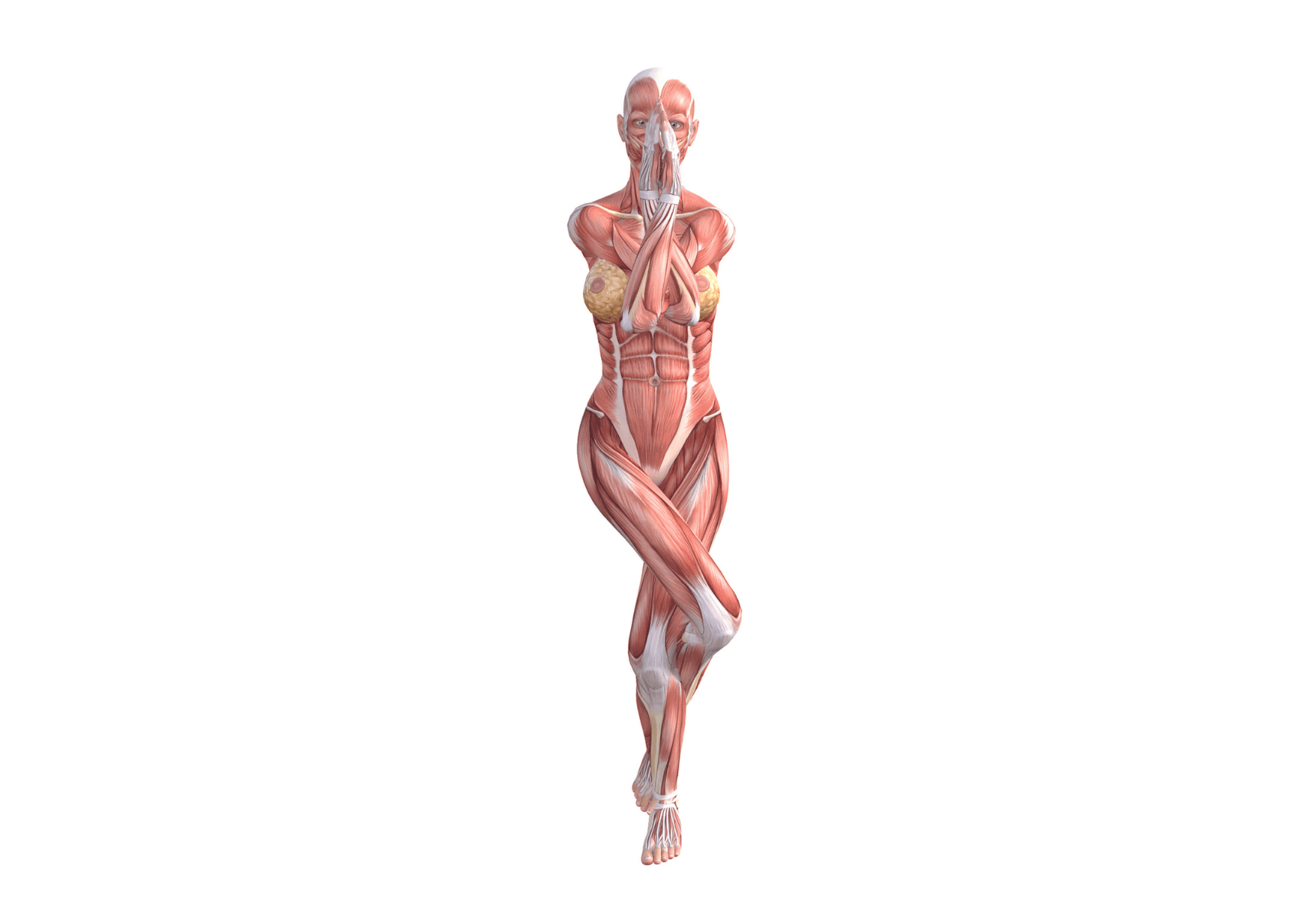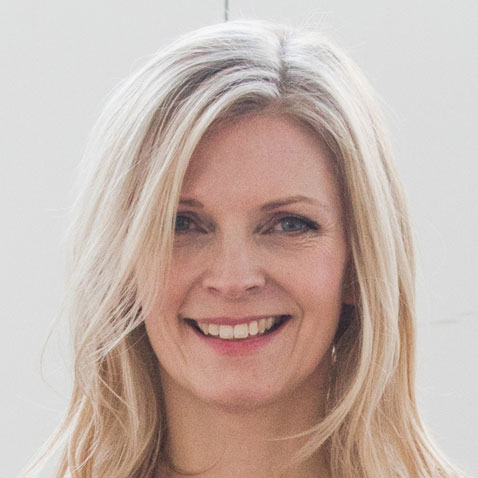
A 360º overview of...
Eagle Pose (Garudasana)
With Dr Kiki Morriss
Reading time: 3 minutes
Eagle Pose is a dynamic balancing pose that improves co-ordination whilst strengthening your legs and ankles. It also stretches your upper back and shoulders and improves the function of your brain. Your brain is divided into two hemispheres — the right brain and the left brain. The nerve fibres that join the two sides are known as the corpus callosum.
Your right brain governs the left side of your body and is associated with creativity, emotions and space-orientated tasks. Your left brain governs the right side of your body and is associated with logic, sequencing information and time-orientated tasks.
When you cross your arms and legs in Eagle Pose, you bring body parts from one side of your body over to the other side. This action, known as crossing the midline, activates the corpus callosum and makes the two hemispheres of your brain communicate. Crossing the midline synchronises both sides of your body and both sides of your brain simultaneously. This allows your brain to function optimally.
Moving into the pose
- Stand in Mountain Pose.
- Take your arms out at shoulder height.
- Cross your left upper arm over your right upper arm, whilst bending your elbows.
- Wrap your forearms around each other and press your hands together in prayer position.
- Bend your knees.
- Cross your right thigh over your left thigh.
- Tuck your right foot behind your left lower leg.
- Squeeze your limbs together.
- Breathe in and out 5 times
- Repeat on the other side.
Hips and Legs
- Adduct and internally rotate your hips.
- Squeeze your legs together.
Head
- Keep your head in line with your spine
- Hold your chin parallel with the ground.
Focus your gaze
- Your focal point (drishti) is at a fixed point straight ahead of you. This will help you to balance
Shoulders and arms
- Adduct your arms across your chest.
- Feel the stretch of your rhomboids and trapezius.
- Squeeze your arms together
- With your hands in prayer position, lift your fingers towards the sky.
- Relax your shoulders away from your ears.
- Draw your shoulder blades down your back.
- Align your hands and wrists directly above your wrists.
Back
- Extend your spine upwards.
- Avoid leaning forwards in the pose.
Variations & Modifications
- Eagle can be done lying on your back and this pose is called Eagle in the Nest. Lie down and come into Eagle. Curl upwards, lifting your head, shoulders, upper back and legs.
- If your shoulders are injured, bring your hands into prayer position in front of your chest.
Benefits
- Strengthens your hips, knees and ankles.
- Stretches your shoulders and upper back.
- Develops flexibility and co-ordination.
- Improves balance.
- Focuses your mind.
- Optimises your brain function.
Contraindications
- Practice Eagle Pose with caution if you have a shoulder, hip, knee or ankle Injury
- Practice with caution if you have high blood pressure.







